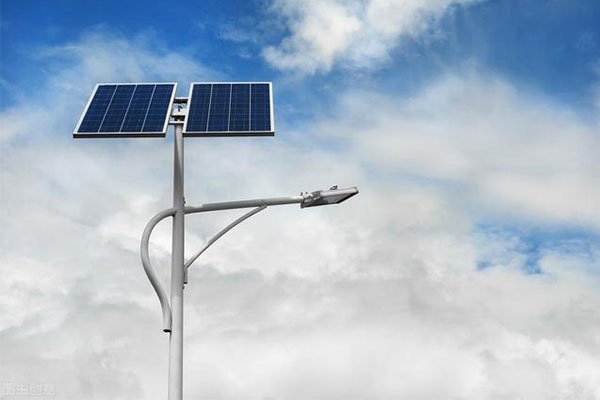Choosing the right solar street light is essential for ensuring long-term performance in different climate conditions.
Temperature, humidity, and weather conditions directly impact the efficiency and durability of solar street lights, affecting key components such as solar panels, batteries, LED lights, controllers, and poles.
Understanding how climate factors influence solar lighting helps in selecting the most suitable system for each environment, ensuring efficiency and longevity.
Key Factors in Choosing Solar Street Lights
✅ Solar Panel Efficiency – High-efficiency panels ensure energy generation even in low sunlight.
✅ Battery Type & Capacity – Must withstand temperature fluctuations and ensure stable power storage.
✅ LED Light Durability – Heat-resistant and waterproof LEDs improve longevity.
✅ Control Systems – Smart controls like dimming and motion sensors optimize energy use.
✅ Material & Build Quality – Corrosion-resistant and waterproof materials enhance durability.
Best Solar Street Lights for Different Climate Conditions
High-Temperature & Desert Areas 🌞🔥
Challenges:
- Extreme heat reduces battery performance.
- Dust and sandstorms decrease solar panel efficiency.
- UV exposure can damage LED lights and plastic parts.
Recommended Features:
✅ Battery Choice: LiFePO4 batteries (better heat resistance).
✅ High-Temperature-Resistant Solar Panels: Monocrystalline panels with anti-reflective coating.
✅ IP65+ Waterproof & Dustproof Rating: Protects against sandstorms and dust accumulation.
✅ Self-Cleaning Solar Panels: Reduces dust buildup, maintaining efficiency.
✅ Heat-Resistant LED Chips: Low thermal resistance prevents LED burnout.
💡 Best Use Cases: Middle East, Africa, Australia, Southwest USA
Cold & Snowy Regions ❄️🌨️
Challenges:
- Cold temperatures reduce battery efficiency.
- Snow accumulation on panels blocks sunlight.
- Ice formation can damage poles and electrical components.
Recommended Features:
✅ Battery Choice: LiFePO4 or Gel Batteries (better performance in freezing temperatures).
✅ Angled Solar Panels: ≥ 45° angle to prevent snow buildup.
✅ IP66 Waterproof & Anti-Freeze Housing: Ensures protection against snow and ice.
✅ Automatic Battery Heating Systems: Prevents freezing in extreme temperatures.
✅ High-Power LEDs: Compensates for shorter daylight hours.
💡 Best Use Cases: Canada, Northern Europe, Russia, Northern China, Alaska
Rainy & High-Humidity Areas 🌧️⚡
Challenges:
- Limited sunlight exposure affects battery charging.
- Excessive humidity causes corrosion.
- Frequent storms & heavy rain lead to electrical failures.
Recommended Features:
✅ Battery Choice: LiFePO4 or Deep-Cycle Gel Batteries (better energy storage for cloudy days).
✅ High-Efficiency Monocrystalline Panels: Work better in low-light conditions.
✅ IP66 Waterproof Rating: Protects against water damage.
✅ Rust-Proof & Anti-Corrosion Materials: Aluminum alloy or powder-coated poles.
✅ Smart Controllers with Adaptive Dimming: Adjusts brightness based on available energy.
💡 Best Use Cases: Southeast Asia, South America, Coastal & Tropical Regions
Comparison Table: Best Solar Street Lights for Different Climates

| Climate Condition | Best Battery Type | Solar Panel Type | Key Protection Features |
|---|---|---|---|
| High-Temperature & Desert Areas | LiFePO4 | Monocrystalline (heat-resistant) | IP65+ dustproof, UV-resistant LEDs, self-cleaning panels |
| Cold & Snowy Regions | LiFePO4 or Gel | Monocrystalline (angled) | Battery heating system, IP66 waterproof, anti-freeze casing |
| Rainy & High-Humidity Areas | LiFePO4 or Deep-Cycle Gel | Monocrystalline (high-efficiency) | IP66 waterproof, anti-corrosion material, adaptive dimming |
Conclusion
The right solar street light system depends on climate, battery type, solar panel efficiency, and durability features.
- For hot climates, prioritize heat-resistant materials and dustproof designs.
- For cold climates, ensure battery heaters and steep panel angles to prevent snow buildup.
- For rainy regions, choose waterproof and rust-resistant models with energy storage solutions.
Investing in the right system ensures long-term performance, reliability, and energy efficiency.







